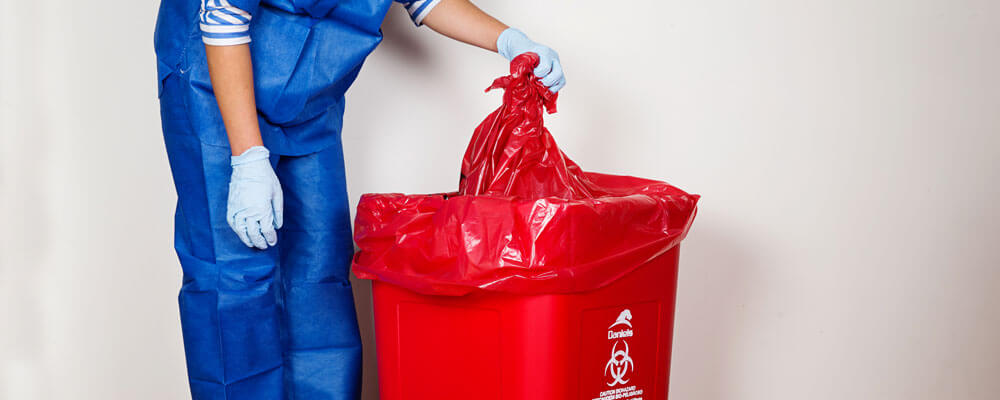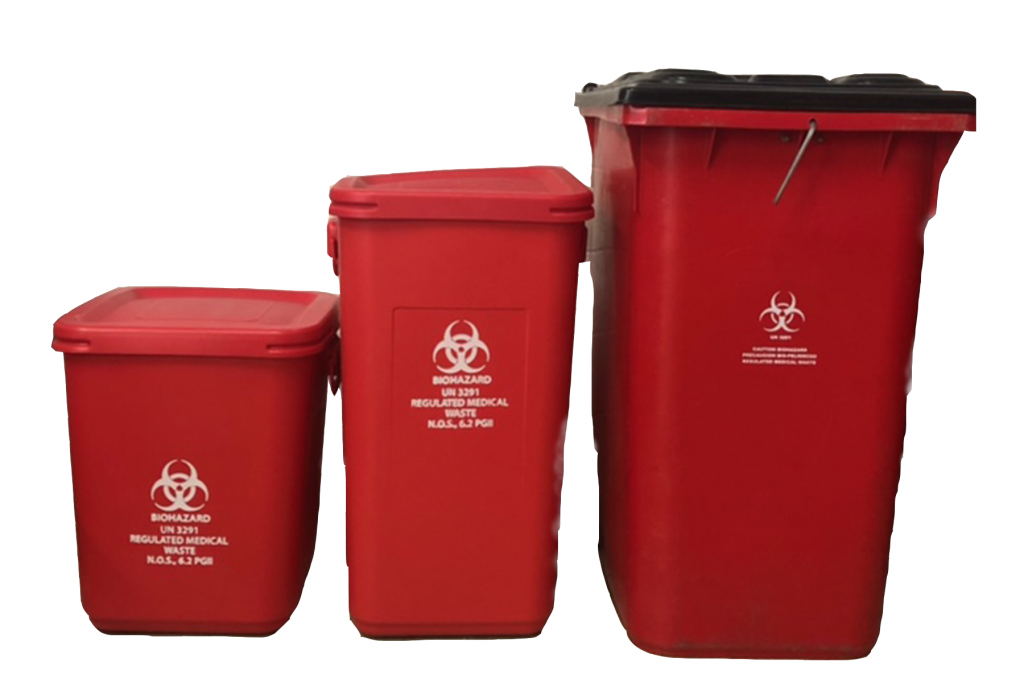Safeguarding Wellness: Expert Medical Waste Removal Services for a Clean Atmosphere
Wiki Article
Keep Compliant and Safe: Just How to Throw Away Medical Waste Properly
In today's ever-changing medical care landscape, guaranteeing conformity and security when it comes to medical waste disposal is of utmost relevance. The right management and disposal of medical waste not just shields the atmosphere yet also safeguards the health and wellness and well-being of medical care workers and the basic public (medical waste disposal services with WasteX). Nonetheless, navigating the complex laws and standards surrounding clinical waste disposal can be a challenging job. In this discussion, we will check out the various sorts of medical waste, the connected threats, the legal demands, and the very best practices for keeping a secure and compliant clinical waste management system. Stay tuned to find the eco-friendly services that are reinventing the means clinical waste is dealt with, as we clarified this critical aspect of medical care procedures.Significance of Appropriate Medical Waste Disposal
Proper medical garbage disposal is of utmost relevance in ensuring the safety and security and health of both medical care employees and the basic public. Medical waste, that includes products such as utilized needles, polluted dressings, and expired medications, poses serious wellness threats if not dealt with and gotten rid of properly.
Moreover, incorrect disposal of medical waste can result in environmental contamination. When clinical waste is not set apart, treated, or disposed of correctly, it can find its method right into garbage dumps or bodies of water, potentially polluting the air, soil, or water resources. This can have damaging impacts on communities and human health, as unsafe materials may leach right into the atmosphere or be released right into the environment.
Sorts Of Clinical Waste and Their Dangers
The varied variety of medical waste generated by healthcare centers provides various threats that should be carefully resolved to make sure proper disposal and protect against prospective injury to public health and wellness and the environment. Clinical waste can be classified right into different classifications based on its attributes and level of danger.One sort of medical waste is transmittable waste, which consists of items that are polluted with blood or various other potentially transmittable materials. This can include made use of needles, syringes, and other sharp items, as well as tissues, swabs, and dressings from people with infectious illness. Improper disposal of contagious waste can bring about the transmission of dangerous microorganisms and the spread of infections.
An additional category is contaminated materials, that includes materials that are hazardous, combustible, harsh, or responsive. This can include chemicals, pharmaceuticals, and specific clinical devices. Mishandling or incorrect disposal of unsafe waste can result in environmental contamination and posture risks to the health of waste workers and the basic public.
Contaminated waste is an additional sort of clinical waste that need to be carefully managed. This waste includes products which contain radioactive substances, such as used radiation therapy sources or polluted research laboratory products. Improper handling or disposal of radioactive waste can cause radiation direct exposure and severe wellness threats.
Last but not least, non-hazardous basic waste, such as paper, product packaging products, and food waste, is also generated by healthcare facilities. While this waste might not pose significant risks, it still needs to be properly managed to maintain sanitation and protect against the tourist attraction of pests.
To ensure the safe disposal of clinical waste, medical care centers need to carry out appropriate segregation, therapy, transportation, and storage space approaches. This includes using appropriate containers, labeling, and training for team, in addition to adhering to regional policies and guidelines. By addressing the threats connected with different sorts of clinical waste, health care facilities can shield public health and wellness and the environment.
Regulatory and lawful Demands for Disposal
In order to ensure the secure and proper disposal of medical waste, health care facilities have to conform with lawful and regulative needs. These demands remain in location to protect public health and wellness and the environment from the prospective hazards connected with medical waste. Clinical waste is classified as a special group of waste because of its possible to transmit transmittable diseases and consist of hazardous materials.
Some usual requirements include the segregation and appropriate product packaging of clinical waste, making use of authorized tags and containers, and the implementation of risk-free handling and transport treatments - medical waste removal. Healthcare facilities may likewise be needed to keep documents additional info of their waste monitoring techniques and provide documentation to regulative authorities upon request
Failure to follow these regulative and lawful demands can cause fines, penalties, and reputational damages for health care centers. It is, as a result, crucial for doctor to prioritize compliance and establish durable waste monitoring methods to make certain the appropriate and risk-free disposal of clinical waste.
Ideal Practices for Safe Medical Waste Monitoring
Medical care centers should adhere to industry best techniques to make certain the secure and efficient monitoring of clinical waste - medical waste disposal services with WasteX. Carrying out these best techniques not only assists protect the setting and public health however also minimizes the risk of prospective lawful and financial effectsOne of the crucial ideal methods is the correct partition and control of different kinds of clinical waste. This includes making use of color-coded containers and clearly identifying them to make certain that each type of waste is disposed of properly. In addition, healthcare facilities need to have designated areas for storage space and disposal of clinical waste, with clear standards and procedures in location.
An additional important element of risk-free clinical waste monitoring is the training and education of health care personnel. All employees that handle try this out medical waste must obtain thorough training on the proper handling, storage, and disposal procedures. It is vital to make certain that staff members recognize the prospective dangers related to clinical waste and are furnished with the essential expertise and abilities to manage it securely.
Normal surveillance and bookkeeping of waste monitoring techniques is additionally essential. This involves routinely evaluating waste medical waste disposal services with WasteX administration procedures, conducting evaluations, and maintaining accurate documents. By monitoring waste management practices, medical care centers can determine any type of prospective issues or areas for renovation and take rehabilitative activities appropriately.
Lastly, healthcare centers must prioritize making use of eco-friendly disposal approaches whenever possible. This includes making use of waste therapy innovations such as autoclaving or incineration, which can help lower the quantity and dangerous nature of clinical waste.
Eco-Friendly Solutions for Medical Garbage Disposal
Executing environmentally friendly solutions for clinical waste disposal is crucial for medical care facilities to minimize ecological impact and make certain lasting practices. Typical techniques of clinical waste disposal, such as incineration and landfilling, have been located to release harmful contaminants into the air and pollute soil and water resources. Consequently, there is an expanding need for alternate methods that are both environmentally pleasant and secure.These systems utilize sophisticated technologies to safely process clinical waste within the medical care center itself. By treating the waste on-site, transportation discharges and threats linked with off-site disposal are reduced.
Another environment-friendly strategy is the fostering of reusing programs for sure kinds of clinical waste. Materials such as glass, plastics, and metals can be recycled instead than disposed of in land fills. By implementing segregation and recycling programs, health care facilities can substantially lower their waste quantity and decrease their ecological impact.
In addition, healthcare centers can discover the use of reusable clinical tools and products. By selecting multiple-use items, instead of single-use choices, the quantity of waste created is dramatically lowered. Multiple-use products can be disinfected and utilized several times, leading to cost savings and much less ecological effect.
Final Thought
In final thought, proper disposal of clinical waste is essential for maintaining compliance and ensuring safety and security. Complying with ideal methods for secure medical waste monitoring and exploring green services can add to a accountable and lasting approach to lose disposal in the medical care industry.
In this conversation, we will certainly explore the different kinds of clinical waste, the involved dangers, the lawful requirements, and the finest practices for preserving a secure and compliant medical waste administration system - medical waste removal services.One kind of medical waste is infectious waste, which includes products that are infected with blood or various other potentially contagious products.Contaminated waste is an additional type of medical waste that should be very carefully managed. Medical waste is categorized as a special classification of waste due to its prospective to transmit infectious diseases and include dangerous materials
Adhering to best practices for safe medical waste management and exploring environmentally friendly services can contribute to a accountable and sustainable approach to squander disposal in the healthcare industry. medical waste disposal services with WasteX.
Report this wiki page